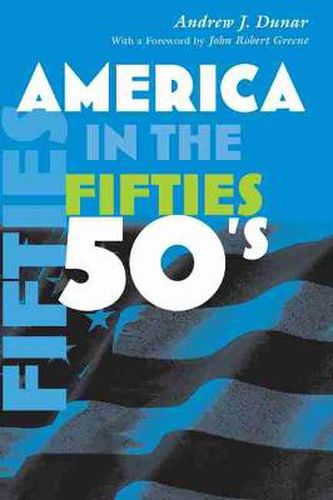Readings Newsletter
Become a Readings Member to make your shopping experience even easier.
Sign in or sign up for free!
You’re not far away from qualifying for FREE standard shipping within Australia
You’ve qualified for FREE standard shipping within Australia
The cart is loading…






Blessed by a booming economy, the United States moved into the space age and the golden age of television in the 1950s. At the same time, the nation faced domestic and international divisions that would have far-reaching historical and political consequences. The 1950s evoke images of prosperity, suburbia, a smiling President Eisenhower, cars with elaborate tail fins, Elvis Presley, Marilyn Monroe, and the
golden age
of television - seemingly a simpler time in which the idealized family life of situation comedies had at least some basis in reality. A closer examination, however, recalls more threatening images: the hysteria of McCarthyism, the shadow of the atomic bomb, war in Korea, the Soviet threat manifested in the launch of Sputnik and the bombast of Nikita Khrushchev, and a clash over the integration of a high school in Little Rock. Andrew J. Dunar successfully shows how the issues confronted America in the late twentieth century have roots in the fifties, some apparent at the time, others only in retrospect: civil rights, environmentalism, the counterculture, and movements on behalf of women, Chicanos, and Native Americans. The rise of the beats, the continuing development of jazz, the emergence of rock ‘n roll, and the art of Jackson Pollock reveal the decade to be less conformist than commonly portrayed. While the Cold War rivalry with the Soviet Union generated the most concern, Dunar skillfully illustrates how the rise of Nasser in Egypt, Castro in Cuba, and Communist regimes in North Korea, Vietnam, and China signaled new regional challenges to American power. This book will be ideal for instructors of American history survey courses at the high school and undergraduate levels.
$9.00 standard shipping within Australia
FREE standard shipping within Australia for orders over $100.00
Express & International shipping calculated at checkout
Blessed by a booming economy, the United States moved into the space age and the golden age of television in the 1950s. At the same time, the nation faced domestic and international divisions that would have far-reaching historical and political consequences. The 1950s evoke images of prosperity, suburbia, a smiling President Eisenhower, cars with elaborate tail fins, Elvis Presley, Marilyn Monroe, and the
golden age
of television - seemingly a simpler time in which the idealized family life of situation comedies had at least some basis in reality. A closer examination, however, recalls more threatening images: the hysteria of McCarthyism, the shadow of the atomic bomb, war in Korea, the Soviet threat manifested in the launch of Sputnik and the bombast of Nikita Khrushchev, and a clash over the integration of a high school in Little Rock. Andrew J. Dunar successfully shows how the issues confronted America in the late twentieth century have roots in the fifties, some apparent at the time, others only in retrospect: civil rights, environmentalism, the counterculture, and movements on behalf of women, Chicanos, and Native Americans. The rise of the beats, the continuing development of jazz, the emergence of rock ‘n roll, and the art of Jackson Pollock reveal the decade to be less conformist than commonly portrayed. While the Cold War rivalry with the Soviet Union generated the most concern, Dunar skillfully illustrates how the rise of Nasser in Egypt, Castro in Cuba, and Communist regimes in North Korea, Vietnam, and China signaled new regional challenges to American power. This book will be ideal for instructors of American history survey courses at the high school and undergraduate levels.